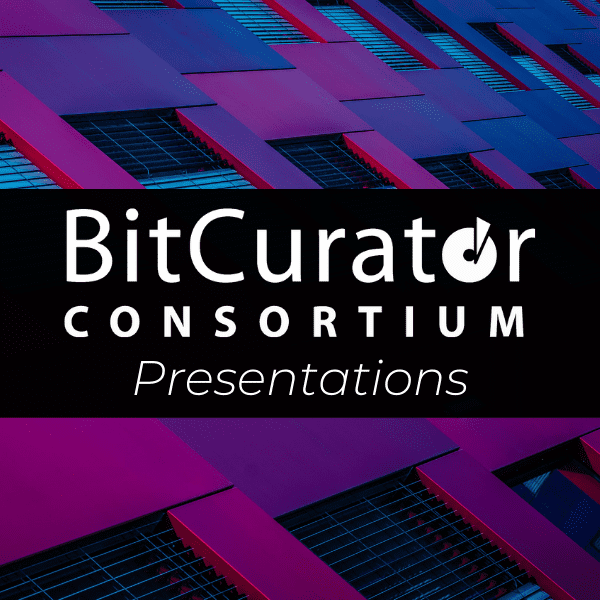Session 5: Imaging
Laura Alagna, Alex Chassanoff, Dianne Dietrich, Brian Dietz, farrell, Alex Nelson, Shira Peltzman, Paige Walker, Tori Maches | BitCurator Consortium
Talk One: To Image or Not to Image: Implementing a staggered transition to logical capture by default (1:30)
Tori Maches
While creating disk images is best practice for physical storage media, this is not always practical. Disk images represent an increased storage and time commitment compared to logical captures, since they include material such as unallocated space and deleted files, in addition to the files currently stored on a piece of media. When large storage or media volumes are involved, processing becomes significantly less scalable and sustainable. The digital preservation community has begun shifting away from disk imaging all media by default, and toward a “deciding when to image” rather than a “deciding when not to image” approach. However, risk tolerance, technical issues, and “digital preservation FOMO” can present challenges for practitioners trying to make this transition. This session describes successes, challenges, and future plans for a staggered transition to logical capture by default at UC San Diego, brought on by a large accession of born-digital content that required us to adapt quickly to working at a large scale. The presenter will address issues including beginning this transition, technical metadata, deciding when to create disk images, and lessons learned.
Talk Two: Rumors of the disk image’s demise may (or may not) be greatly exaggerated: Assessing preservation formats for disk contents in archival workflows Online (10:20)
Laura Alagna, Alex Chassanoff, Dianne Dietrich, Brian Dietz, farrell, Alex Nelson, Shira Peltzman, Paige Walker
BUF2019 sparked a debate over the sustainability of disk imaging as a process and disk images as the “default” target output of processing born-digital material. While the community has started to openly question whether the disk image is *the* preservation format, they still have a significant role in digital archival workflows and processing. To explore related issues, we formed an ad hoc inter-institutional group of practitioners to assess the many factors practitioners must consider when deciding whether and how to implement disk imaging in their workflows. Meet Team DANNNG (Digital Archival traNsfer or iNgest or packagiNg Group)! For us, the disk image definitely is not dead yet! DANNNG is currently creating an informal glossary of digital forensics-related terminology and compiled use case scenarios to assist with decision-making for creating and maintaining disk images. There is a lot to consider, including authenticity, privacy, sustainability, and usability. How does your course of action change as you navigate your existing technical and human resources? How about when balancing the goals of multiple stakeholders? We will use the duration of our presentation to introduce our glossary and use cases to the BitCurator community. After establishing a shared vocabulary, attendees will be invited to bring case studies from their home institutions and assess them referring to DANNNG resources. Team DANNNG can’t tell you definitively how you should be transferring data or whether you should be retaining disk images, but we’re here to help you weigh the pros and cons for your own workflows!
Chat Log Slides
Laura Alagna, Alex Chassanoff, Dianne Dietrich, Brian Dietz, farrell, Alex Nelson, Shira Peltzman, Paige Walker, Tori Maches. (October 16, 2020). Session 5: Imaging. BitCurator Consortium.